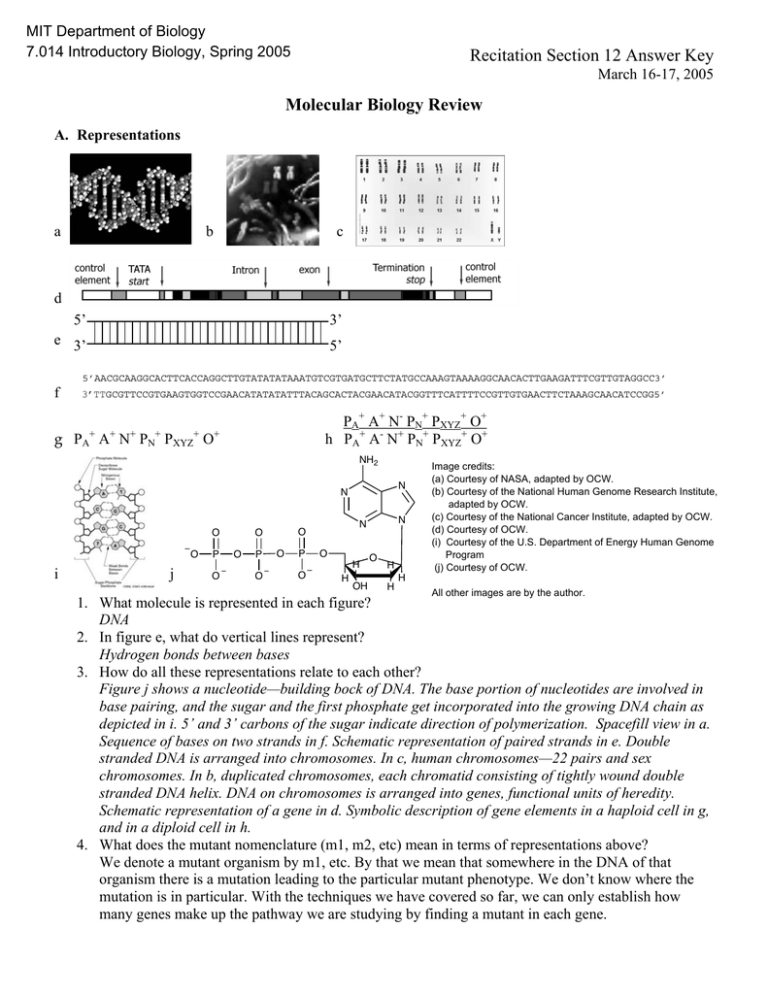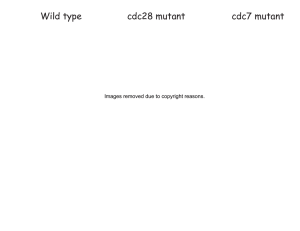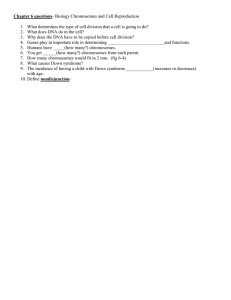Document 13541387
advertisement

MIT Department of Biology 7.014 Introductory Biology, Spring 2005 Recitation Section 12 Answer Key March 16-17, 2005 Molecular Biology Review A. Representations a b c d 5’ 3’ e 3’ 5’ 5’AACGCAAGGCACTTCACCAGGCTTGTATATATAAATGTCGTGATGCTTCTATGCCAAAGTAAAAGGCAACACTTGAAGATTTCGTTGTAGGCC3’ f PA+ A+ N- PN+ PXYZ+ O+ h PA+ A- N+ PN+ PXYZ+ O+ g PA+ A+ N+ PN+ PXYZ+ O+ NH2 N N O O i 3’TTGCGTTCCGTGAAGTGGTCCGAACATATATATTTACAGCACTACGAACATACGGTTTCATTTTCCGTTGTGAACTTCTAAAGCAACATCCGG5’ j P O P O P O H O O O N N O O H OH O H H Image credits: (a) Courtesy of NASA, adapted by OCW. (b) Courtesy of the National Human Genome Research Institute, adapted by OCW. (c) Courtesy of the National Cancer Institute, adapted by OCW. (d) Courtesy of OCW. (i) Courtesy of the U.S. Department of Energy Human Genome Program (j) Courtesy of OCW. H All other images are by the author. 1. What molecule is represented in each figure? DNA 2. In figure e, what do vertical lines represent? Hydrogen bonds between bases 3. How do all these representations relate to each other? Figure j shows a nucleotide—building bock of DNA. The base portion of nucleotides are involved in base pairing, and the sugar and the first phosphate get incorporated into the growing DNA chain as depicted in i. 5’ and 3’ carbons of the sugar indicate direction of polymerization. Spacefill view in a. Sequence of bases on two strands in f. Schematic representation of paired strands in e. Double stranded DNA is arranged into chromosomes. In c, human chromosomes—22 pairs and sex chromosomes. In b, duplicated chromosomes, each chromatid consisting of tightly wound double stranded DNA helix. DNA on chromosomes is arranged into genes, functional units of heredity. Schematic representation of a gene in d. Symbolic description of gene elements in a haploid cell in g, and in a diploid cell in h. 4. What does the mutant nomenclature (m1, m2, etc) mean in terms of representations above? We denote a mutant organism by m1, etc. By that we mean that somewhere in the DNA of that organism there is a mutation leading to the particular mutant phenotype. We don’t know where the mutation is in particular. With the techniques we have covered so far, we can only establish how many genes make up the pathway we are studying by finding a mutant in each gene. Image




